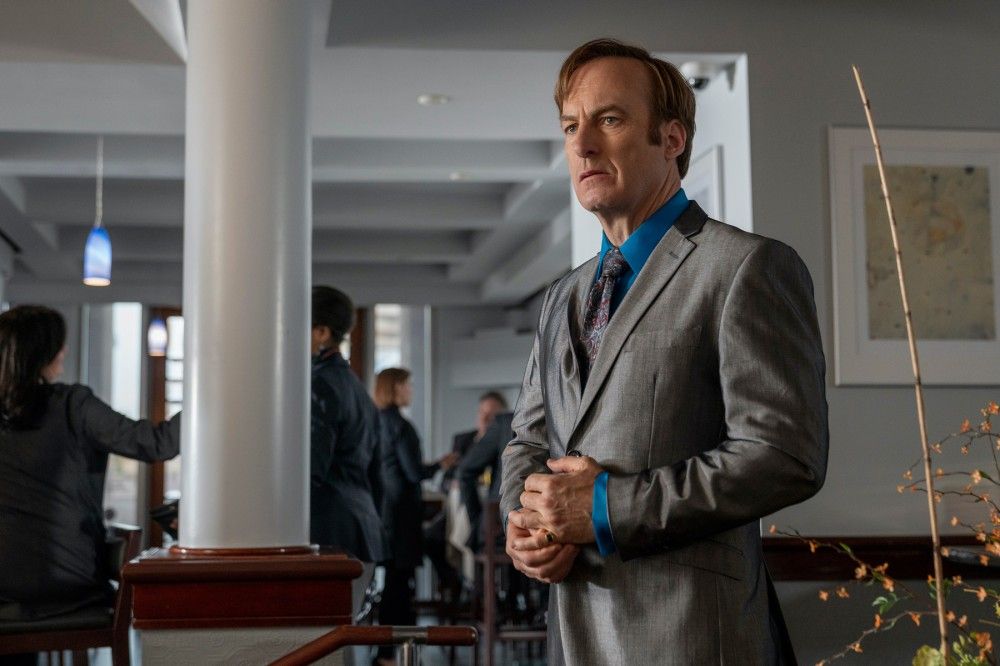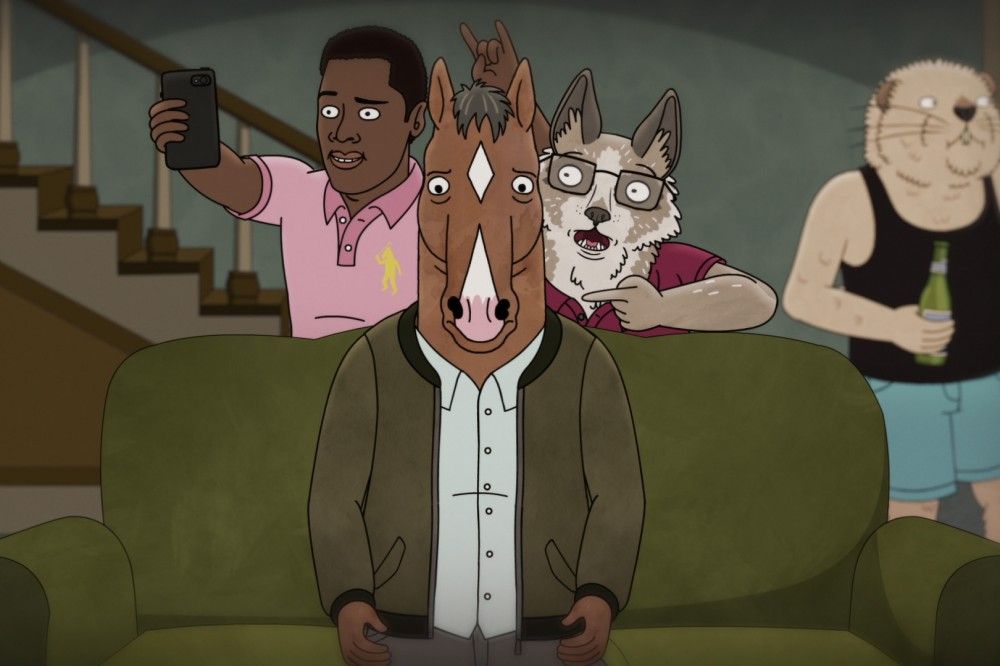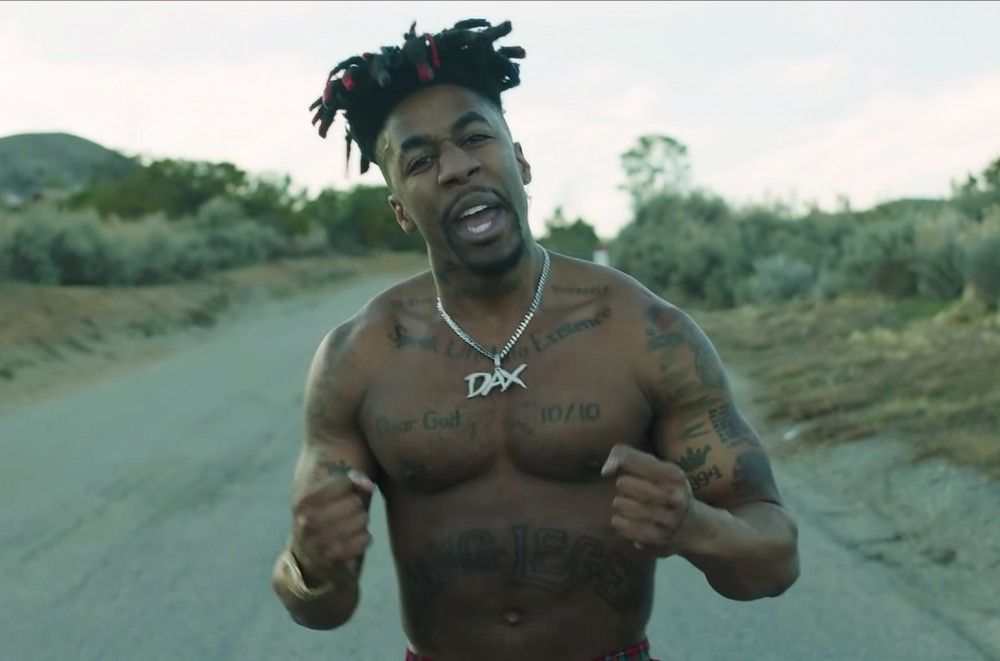
'Better Call Saul' Recap: Bowled Over
A review of this week’s , “Namaste,” coming up just as soon as I give the deep fryer another cleaning…
“Yesterday was bad. Today, I’m gonna fix it.” —Kim
The main action of “Namaste” picks up the morning after “The Guy For This” ended. Kim and Jimmy are hungover from their night of drunken vandalism, and as they head out for work, Kim is struck by the sight of all the broken bottles they’d tossed from the balcony. Last week, when Jimmy discovered the mess he’d made by dropping his ice cream cone on the curb, he shrugged it off and walked away. So it’s not surprising that he tells Kim to let the building association handle the detritus in their parking lot. But after Jimmy has peeled out in his Suzuki Esteem for another day as Saul Goodman, Kim grabs a broom and, in her tailored suit and pumps, literally cleans up her own mess. And then she works the phone in the hopes of metaphorically doing the same regarding Mr. Acker.
As much as Kim loves Jimmy, and as willing as she is to swim in ethically murky waters with him at times, she’s ultimately a much more responsible and compassionate person than he is. She doesn’t have to do either of these tasks. As Jimmy says, someone else will sweep up the glass, while her legal responsibility on the business front is to Mesa Verde, not this stubborn old man who repeatedly insulted her. But she knows both of these messes ultimately fall on her, and she won’t be happy unless she pushes the broom herself.
Kim’s not the only one in cleaning mode throughout “Namaste.” And, like her, the other characters discover that some messes don’t want to go away, no matter how hard you sweep or scrub.
The other literal cleaning job happens over at Los Pollos Hermanos, where Gus’ loyal assistant manager Lyle winds up staying long after his shift his done, working his fingers raw with steel wool as he attempts to scrub the deep fryer to his boss’ satisfaction. Poor Lyle has no way of knowing about Gus’ other life as the Chicken Man of Albuquerque, nor that this concern over the fryer is how Gus deals with his anxiety as he waits to see if Victor and Tyrese can complete the con job that Nacho has set up with Hank and Gomez. It’s a striking sequence, not just for the way Lyle’s mundane task is contrasted with the much higher stakes of Victor leading a DEA task force on a semi-wild goose chase. This feels like the first time on Better Call Saul — and one of the few times in Giancarlo Esposito’s entire time playing the role — where we are seeing Gus Fring sweat. He is so used to being master of all he surveys (even when he is playing subordinate to the Salamancas or Juan Bolsa, he is clearly manipulating events) that he seems startlingly vulnerable as he sits in his office and waits for the text, taking out all his mounting frustration on Lyle(*).
(*) In hindsight, it occurs to me that the timeline of this show has done Gus no favors. Where we traveled back far enough in time to get to know Jimmy/Saul and Mike when there were clear differences from the versions of them we met on Breaking Bad, Gus by this point in the narrative is already basically the guy who first sat across a table from Walter White. To get the Gus equivalent of the journey that Jimmy’s been on, we would basically have to pick up in 1989, right after Hector murders Max, to see how Gus rose up from that low moment and built himself into the kind of man who could destroy his enemies within 20 years. But that’s a very different show from this one.

Kerry Condon as Stacey and Jonathan Banks as Mike.
Mike belatedly tries to repair the damage he caused when he yelled at Kaylee back in “50% Off,” going to Stacey’s house and asking to watch his granddaughter again. But he never even gets inside the door, as his gentle but firm daughter-in-law suggests that this emotional wound needs more time to heal, and that Mike should use that time to get back to himself. “Get back to myself,” Mike repeats, in a somber tone suggesting that such a fate is the worst thing anyone can ask of him. The Mike scenes so far this season have been effectively threading a storytelling needle. On the one hand, the show needed to sideline Mike for a bit so he wouldn’t be involved in the escalating Gus/Lalo tensions, and so he’d be professionally unencumbered when he woke up in that odd compound (presumably south of the border) at the end of the episode. But it doesn’t feel like spinning wheels, because Jonathan Banks is just that good at playing Mike’s pain (listen to the break in his voice when Mike assures Stacey that he’ll be OK), and because it feels like a genuine and important character arc. We are nearing Mike’s last chance to not go into business with Gus Fring, which we know will end poorly for both of them. Last season, it felt more like Mike fell into the superlab job than that he made an active choice to join the team. So it matters that we’re seeing him try to get away, and that it is not going well for him. Without work, and with Kaylee understandably scarred by their last encounter, Mike has nothing to tune out thoughts of Werner or Mattie, so he opts to pick a fight with the same crew he easily took down last week, eager for the physical punishment they give him. He wakes up a mess — in a location that feels certain to re-engage him with Gus’ world — but he wants to be one. (If anything, he looks disappointed to be waking up at all, having failed at suicide-by-punk.)
After his dalliance with the Salamancas last week, Jimmy is on more comfortable terrain landing the junkies from “50% Off” as his new clients, and running a short con in court by having a lookalike sit in for a defendant to discredit an eyewitness. But he also takes that lunch with Howard Hamlin, and discovers that Howard wants to belatedly clean up the mess he created years before by letting Chuck talk him out of hiring Jimmy to be an HHM associate. This is a very different Howard from the broken man Jimmy had to give a tough-love speech to in last season’s “Pinata.” The firm is doing well again, Howard is loving life and embodying the vanity license plate that gives “Namaste” its title. He is genuinely curious about Jimmy’s new identity as Saul Goodman, asking the question that defines the series: “If he’s not Jimmy McGill, who is he? What’s he about?” Jimmy gives him a song and dance about David vs. Goliath, but Howard correctly notes that he could play that role under his real name.
Despite all the bad blood between them — much, but not all, of it Chuck’s fault — Howard wants to bring Jimmy into the fold, eager to have the guy he once dubbed Charlie Hustle working cases for HHM. We know from Season Two that Jimmy is temperamentally unsuited to work at such a place — he even mentions Cliff Main while Howard is making his sales pitch — but like Mike’s attempt to enjoy retirement, this is something of a last chance for Jimmy before he goes full Saul. He could take the offer, have security, and even the satisfaction of knowing the position would make Chuck roll over in his grave. But the reasons for wanting that job are long gone. Chuck’s dead, Kim’s at another firm (and Jimmy is in willful denial about how much she dislikes Saul Goodman), and hanging out his own shingle gives Jimmy the freedom to pull courtroom stunts that Howard would never allow.

Patrick Fabian as Howard Hamlin.
But Jimmy isn’t just uninterested in the job Howard is dangling in front of him. He is offended to see how well Howard is doing emotionally since that encounter in the men’s room. Chuck’s death broke both of them, but where Jimmy had to turn himself into a largely new person to survive it, Howard over time has managed to turn himself back into the guy he used to be. His interest in hiring Jimmy, and living up to the ideals Jimmy argued for in the Season Four finale, is genuine. We know he’s always liked Jimmy, and that he’s basically a good guy — as good a guy as he can be in that tax bracket, anyway. But his ability to achieve inner peace marks him as someone worthy of Jimmy’s contempt. And on his long drive home from meeting with Mr. Acker — a little guy being stepped on by a Goliath that Howard’s firm used to represent — Jimmy is inspired to stop at a secondhand store in search of tools of mayhem. We see this visit out of context, as the episode’s teaser, unsure why Jimmy needs a heavy object and for what purpose. It’s not until the episode’s almost over that we learn those used bowling balls were purchased for Jimmy to hurl over the gate of Howard’s mansion, aimed at the car with the “Namaste” plates that stirred up all of Jimmy’s old anger and class resentment. No good deed goes unpunished, and Howard will likely never find out that his well-meaning offer to his mentor’s kid brother led to this act of vandalism.
Jimmy winds up visiting Acker only after Kim tries and fails to convince Kevin to try an alternate location for the Tucumcari call center. (Say that five times fast.) This is dangerous ground she is treading on. Acker is not her client; Mesa Verde is. And Rich Schweikart knows who Kim’s boyfriend is, though he may not yet know that Saul Goodman and Jimmy McGill are more or less the same person. There are many ways in which this gambit absolutely blows up on her, creating a mess she won’t be able to clean up without losing her cushy job.

Rhea Seehorn as Kim Wexler.
Maybe this is what she wants, though. She comes into the courtroom to watch Jimmy work, and is there to witness the chicanery with the defendant’s lookalike. She’s amused but unfazed, and she sits quietly in the gallery for a long time while Jimmy gets scolded in the judge’s chambers. She knows who he is and how he conducts himself now. And he is just what she needs to try to do right by Mr. Acker. Kim’s mostly a straight arrow, but she has a weakness for Jimmy, and for his mindset of taking shortcuts with the law. She’s long been impatient with Mesa Verde, and this stunt of getting Jimmy to represent Acker may be as much getting out from under that job as it is about helping an old man on the verge of losing the house he built for himself. It is perhaps her way of throwing a bowling ball in the direction of a rich man with whom she no longer wants to associate.
Because sometimes, the only way to fix one mess is to make a bigger one.
Some other thoughts:
* It’s fun getting to spend a bit of time with this less emotionally conflicted, pre-Tuco version of Hank, particularly as he and Gomez bantered about Culverts while waiting for Victor to pick up the money. But their final scene in this one impressively recontextualized some of Hank’s early bluster on the parent show. When it’s just Hank and Steve talking, Hank can clearly tell something isn’t quite right about this operation, and is disappointed that they only arrested small fish. But then he turns to all the agents and cops who participated in the operation and is the swaggering good ol’ boy we first met on Breaking Bad — a character he has learned to play very well in this world, even if he’s really much more thoughtful.
* When the junkies threaten to hire a public defender rather than pay Jimmy’s retainer, one of them cries out, “Free is free!” The tone’s different, but the phrasing can’t help but evoke the time Walter White’s mechanic told him, “Nothing beats free.” Also, Jimmy’s bluff about leaving the room comes straight from how Hank acted with him and Krazy-8 last week.
* Finally, the David vs. Goliath language may have been more appropriate at a fancy lunch with a man like Howard, but it feels like the crude drawing Jimmy shows Acker of a man having sex with a horse gives him a pitch that seems more suitable: “Picture me as the man and Mesa Verde as the horse. I’m the guy who’ll do whatever it takes to stick it to ’em.”



